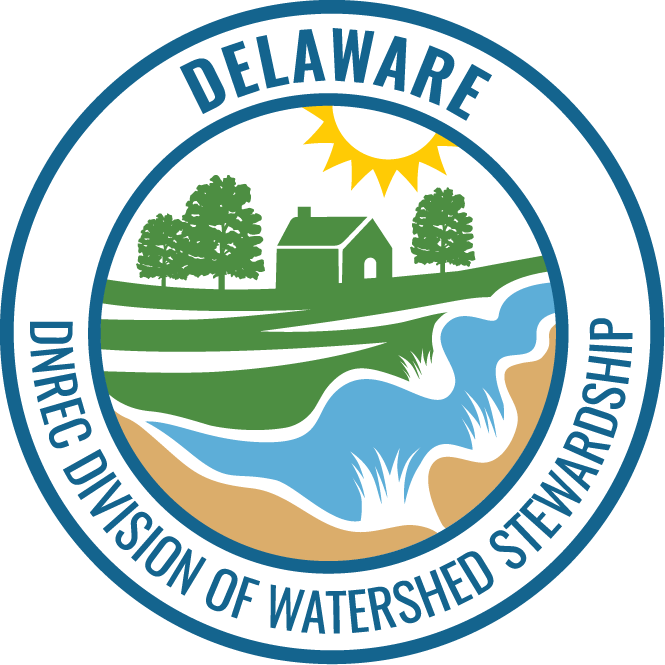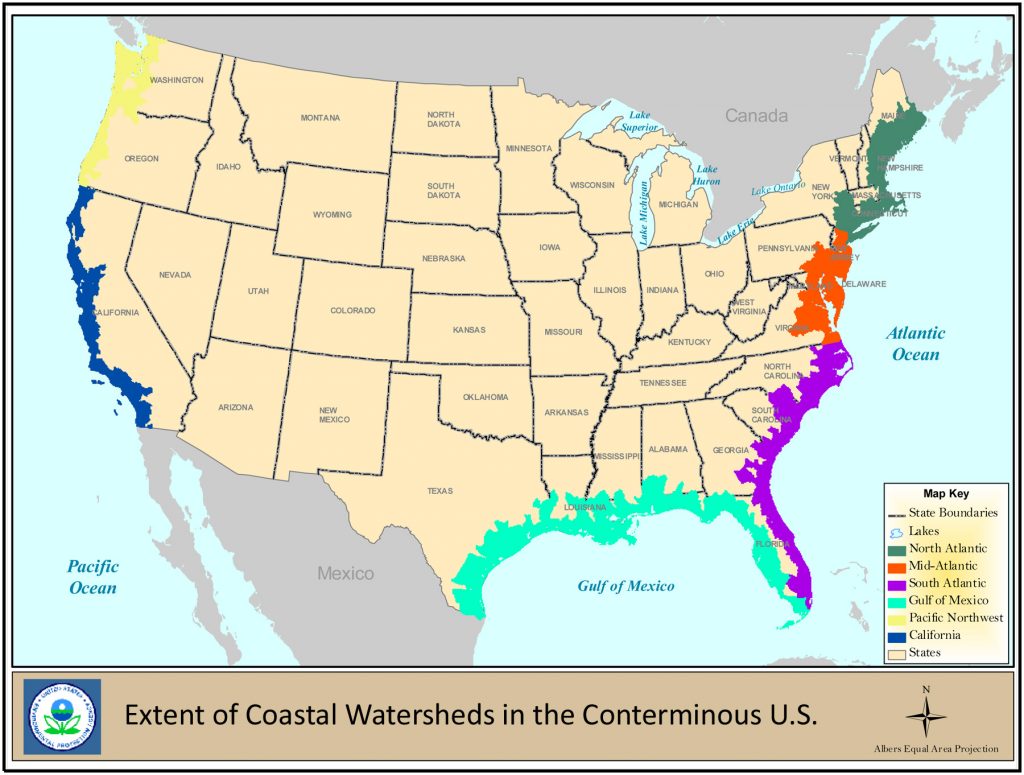
Facebook Twitter Instagram YouTube
Written on: May 25th, 2022 in Education and Outreach
By Olivia McDonald, DNREC’s Wetland Monitoring and Assessment Program
As you drive through the coastlines of Delaware and roll down your windows, you’re greeted by a view like no other. You spot an expansive marsh on your right, opening to a vast bay filled with boats and glistening with sunshine. Most of us know that feeling – you’ve made it to the coast. But let’s take a look beyond the beauty. Past your binoculars and deep within a coastal wetland habitat that is hard at work.
According the to Environmental Protection Agency (EPA), “Coastal wetlands include saltwater and freshwater wetlands located within coastal watersheds – specifically, USGS 8-digit hydrologic unit watersheds which drain into the Atlantic Ocean, Pacific Ocean, or Gulf of Mexico.” These land areas are permanently or seasonally inundated with fresh, brackish, or saline water. The plant community contains a variety of species that are uniquely adapted to the degree of inundation, the type of water that is present, and the soil conditions.

Don’t let the word “coastal” trip you up too much. In this case, we’re talking about wetlands that can be tidal and non-tidal, and freshwater or saltwater. Types of coastal wetlands include, marshes, salt marshes, seagrass beds, freshwater marshes, swamps, bottomland hardwood swamps, and mangrove swamps and forests. What is clear from Map 1 is that coastal wetlands can in fact extend many miles inland from the edge of the coast. Each wetland’s condition within the watershed depends on the influences and health of the surrounding watershed. Some of these areas are not small in nature, and can impact large portions of one or more states.
So what’s the big deal?
To understand the value of coastal wetlands, we need to understand the benefits. Ecosystem services can help us quantify those benefits that these habitats provide and show us how they impact our everyday lives. Let’s take a look at these essential services to people and the environment.
Clean Water
Ah, nature’s water purification system. Coastal wetlands, and really wetlands of all kinds, filter sediment and absorb pollution from outside influences. Runoff from hard surfaces, being a leading cause of pollution, is combated head-on through wetlands. Extra nutrients and pesticides contributed by development and agriculture are filtered out so they don’t enter local waterways. Wetlands simply trap and filter these impurities, helping maintain healthy waters.
Flood or Storm Protection and Erosion Control
If you live in Delaware, you’re going to really appreciate this one. Coastal wetlands are the first line of defensive during storms or floods for residential and commercial property. By holding back amounts of floodwaters and slowing the rate that water enters a system, wetlands can reduce the severity of negative impacts from severe weather events. Coastal wetlands can also prevent coastline erosion due to their ability to absorb destructive wave energy. Being able to dissipate energy created by ocean waves or water movement helps to slow the degradation of a shoreline. For the first state this means protecting people, land, infrastructure, and agriculture from devastating damages.
Carbon Sequestration
As the effects of climate change increase, the need to remove greenhouse gases from the atmosphere becomes more vital for our planet’s future. Certain coastal wetlands, such as salt marshes and seagrass beds, play an important role in decreasing that release. It’s a term we call coastal blue carbon – carbon dioxide that is absorbed and stored in specific coastal ecosystems. These habitats capture and store the gas from the atmosphere in both plants and soil, and even sequester more carbon dioxide than they release. Though the science behind it all is intense, the results can be more simply understood. Coastal wetland ecosystems have a natural ability to reduce the effects of climate change.
Recreation and Tourism
Each coastal wetland is distinct in the habitat it provides, and those areas aren’t just for wildlife. Wetlands provide the public and landowners alike a myriad of opportunities for recreation. From bird watching to hunting, hiking to photography, these ecosystems open the door for people to experience nature. The ever-growing tourist industry centered around Delaware’s beaches do more than just trickle down to hotels, restaurants, and local businesses. With an intricate coastline stretching the length of the entire state, impacts from growth are being seen throughout all three counties. Our coastal habitats are a major economic drivers for a variety of communities job growth and revenue.
Sustainable Fisheries
Imagine your favorite seafood dish. Where do you think it comes from? Many kinds of fish – from salmon to striped bass, as well as lobster, shrimp, oysters and crabs – depend on coastal wetlands for places to feed, live, or reproduce. These areas are like nurseries for young commercial fish and shellfish species. What you see swimming as a little guppy in the back bays may in fact become a 15 pound Bluefish. Quantity and quality of species equals health and extent of wetlands.
Loop back around to Map 1 again and zoom into Delaware. The entire state (yes, the whole thing) is zoned as a coastal watershed. So all the wetlands within the 45 watersheds in Delaware are considered to be in coastal watersheds whether they are tidal or non-tidal. Due to their proximity and zonation, these particular wetlands are more at threat than others in the country, making them particularly important for protection.
Once a habitat is degraded or lost, it loses its value and can become costly to recover the benefits it provides. Using scientific research and extensive management can provide an assortment of recommendations to conserve or preserve these coastal ecosystems for the future. Projects and funding across the country are coming to fruition for wetland restoration involving local, state, and non-government organizations. But some of the most influential adaptations start with you. Understanding the functionality of these coastal ecosystems is a large step in the right direction. So next time you snap that photo of a sunset, or take a bite into a fried clam at your favorite restaurant, be sure to thank coastal wetlands; habitats too valuable to lose.